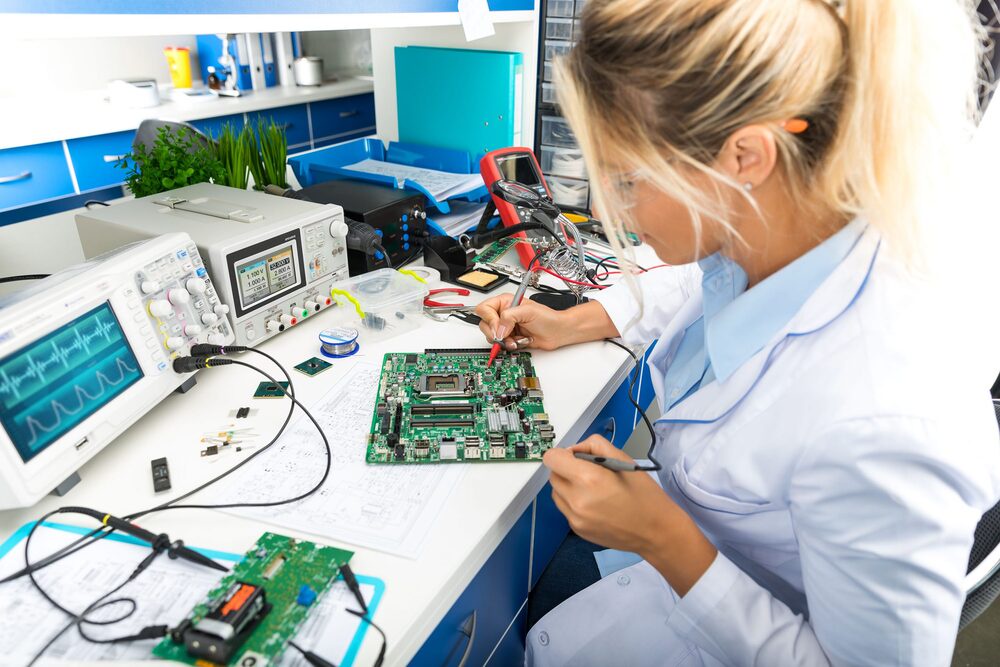Before releasing a new electronic product, it is essential to ensure it functions properly and safely. During the design and production stages, electronic equipment undergoes various tests. One such test, mechanical testing, checks the product’s mechanical properties. It evaluates the material under different settings to determine its strength, elasticity, and hardness. It can be tested under specific geographic conditions or by removing all geographic variables.
How Does Mechanical Testing Work?
Whether conducted by in-house teams or third-party services, mechanical testing always takes place during a product’s production. Since mechanical testing determines the functioning of an item and its regulatory compliance status, environmental elements play a crucial role. Every product comprises different components. Therefore, testing conditions vary from product to product.
When carried out properly, mechanical testing determines an equipment’s safety to the user and the surroundings. It also improves its performance when needed by implementing cost-effective mechanisms and tools. Furthermore, mechanical tests play a significant hand in preventing potential product failures.
Types of Mechanical Testing
Various parts work together to form a product. For instance, one component oversees the equipment’s strength, whereas the other determines its flexibility. Since each piece serves a specific function, the type of mechanical test required depends on their design. The manufacturing department studies a part’s design to analyze its condition, room for adjustment, and performance. There are multiple types of mechanical tests, such as:
Chemical Testing
Chemical testing observes the quality of an equipment’s materials. It checks the materials’ composition during manufacturing to identify design flaws or functioning failures and rectify them accordingly.
Fatigue Analysis
Products are prone to malfunction when they cannot resist cyclic overloading and frequent fluctuations. Fatigue analysis builds a product’s fatigue layers to protect it from overloads and fluctuating energies. Upon layer formation, manufacturers compare the data with the design plan to ensure the material withstands fatigue and maintains its predicted lifespan.
Fracture Testing
Fracture testing provides information about a material’s ability to resist pressure on its strength. Fracture analysis sometimes goes hand-in-hand with fatigue testing to build a material’s power, life expectancy, and maintenance levels. For instance, appliances tend to wear and tear after a certain time due, depending on their durability. While you can repair or purchase new parts, they are heavy on the budget. Fracture testing predicts such scenarios and tests an equipment’s structural strength before finalizing it.
Tensile Testing
Tensile testing assesses a product’s elasticity, fracture strength, toughness, and yield stress. This test entails fastening the material into a cylindrical form and stretching it along the shape’s length. Now, manufacturers use digital tools that measure a material’s load creation. The equipment converts the recorded data into yield strain with a graph.
Destructive Testing
Destructive or compression testing runs in the opposite direction of tensile analysis. Compression testing compresses a cylindrical form to measure its components, unlike tensile testing, where a material is molded into a basic shape.
Stress Rupture Testing
This testing runs throughout the equipment’s lifespan, from the first stage to the final manufacturing step. It provides step-by-step data to the engineers, allowing them to monitor the lifecycle, observe patterns, and use the information to predict and prevent malfunctions.
Importance of Mechanical Testing
Sometimes, manufacturers opt out of mechanical testing due to equipment, expertise, and service costs. However, performing mechanical tests is an investment; it helps in the long run. Avoiding mechanical testing can result in catastrophic damage to the manufacturing team, company, and customers. Conducting these tests can benefit you in multiple ways, including:
Clearing Audit Checks
Passing internal and external audits is essential to continue operating and selling your products. Audits confirm an equipment’s functionality and safety. Clearance failure can tarnish your organization’s reputation, damaging customer reliability and causing costly redesigning.
Preventing Financial Loss
Failing audit checks working on the product from scratch. You must oversee the entire schedule, from the brainstorming sessions to redesigning and reworking. You will also have to pay your employees for overtime and extra work. Mechanical testing reduces production and manufacturing costs and saves time and resources.
Checking Product Gaps
Product malfunctioning can lead to monetary losses, legal implications, and safety hazards. Investing in mechanical testing ensures regular quality checks at every stage. Regular checking makes sure the product functions per regulatory compliance, allows you to test its limits, check its performance under different environments, and make the required adjustments and improvements.
Factors to Consider When Choosing the Right Mechanical Test
Since every item has different components, mechanical testing does not follow the ‘one size fits all’ approach. When choosing a mechanical test for your product, consider the following factors:
1. Environmental conditions, such as the temperature and humidity
2. Product design
3. Connected software
4. Liquid and heat requirements
5. Industries that Use Mechanical Testing
Various sectors and fields use mechanical testing to ensure the functionality of their products.
1. Plastic, metal, and rubber industries
2. Biomedical industry
3. Construction sector
4. Automobiles
Mechanical testing is integral to the production and manufacturing of electrical items. It ensures the product is in top-notch condition regarding safety and functioning. When determining the correct test for your equipment, check its design and the surrounding environmental conditions.


No comments yet